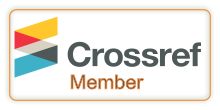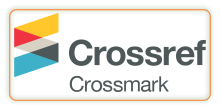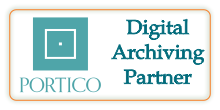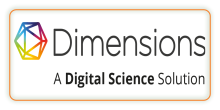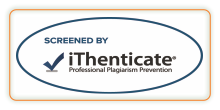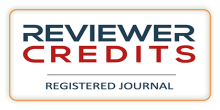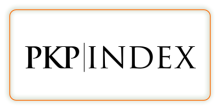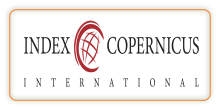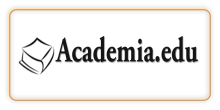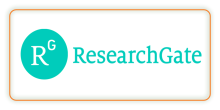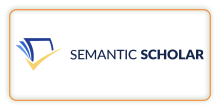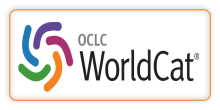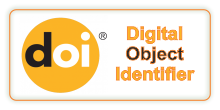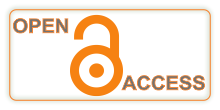PROFESSIONAL ATTITUDE AMONG TEACHER TRAINEES: A CONCEPTUAL AND THEORETICAL EXPLORATION
DOI:
https://doi.org/10.29121/granthaalayah.v13.i5.2025.6184Keywords:
Professional Attitude, Reflective Practice, Ethical Conduct, Pedagogical TheoriesAbstract [English]
Professional attitude in teacher trainees is a crucial determinant of their success and effectiveness in the teaching profession. It encompasses a combination of values, beliefs, behaviors, and commitments that reflect the standards expected of educators in modern classrooms. This paper delves into the theoretical underpinnings and conceptual frameworks that help define and shape professional attitudes in the field of teacher education. It draws insights from disciplines such as educational psychology, which explains how teachers think and act in learning environments; professional ethics, which guide moral conduct and responsibility; and pedagogical theories, which inform teaching methods and student engagement. The review identifies key attributes of professionalism in teachers—such as responsibility, respect, fairness, dedication, and a positive disposition. It examines the influencing factors including personal values, institutional culture, mentorship, and training modules that affect the development of a professional outlook in teacher trainees. The implications for teacher preparation programs are significant, suggesting that training should intentionally foster professional growth alongside academic learning. Importantly, the paper highlights the need to encourage reflective practice, enabling teacher trainees to critically evaluate their actions and improve upon them. Furthermore, a solid professional attitude supports ethical decision-making and instills the habit of lifelong learning, ensuring that teachers stay current with educational trends and continually improve their craft.
Downloads
References
Bandura, A. (1977). Social learning theory. Prentice Hall.
Bandura, A. (1986). Social foundations of thought and action: A social cognitive theory. Prentice-Hall.
Campbell, E. (2003). The ethical teacher. Open University Press.
Campbell, E. (2008). Teaching ethically as a moral condition of professionalism. Teaching and Teacher Education, 24(2), 358–368.
Chauhan, J., & Jain, V. K. (2025). Examine the impact of music on mental well-being and academic achievement among learners. Swar Sindhu: National Peer-Reviewed/Refereed Journal of Music, 13(1), 38. http://swarsindhu.pratibha-spandan.org
Danielson, C. (2007). Enhancing professional practice: A framework for teaching. ASCD.
Danielson, C. (2013). The framework for teaching evaluation instrument. The Danielson Group.
Darling-Hammond, L. (2006). Powerful teacher education: Lessons from exemplary programs. Jossey-Bass.
Darling-Hammond, L., & Bransford, J. (2005). Preparing teachers for a changing world. Jossey-Bass.
Day, C. (2004). A passion for teaching. RoutledgeFalmer.
Dweck, C. S. (2006). Mindset: The new psychology of success. Random House.
Hargreaves, A., & Fullan, M. (2012). Professional capital: Transforming teaching in every school. Teachers College Press.
InTASC. (2013). Model core teaching standards: A resource for state dialogue. Council of Chief State School Officers.
Jain, D. K., & Sharma, R. (2024). Examine The Trainee Teachers’ Viewpoints Regarding Theater-Based Teaching (TBT). ShodhKosh: Journal of Visual and Performing Arts, 675–690.
Jain, D. V. K. (2024). Exploring Educator Communities of Practice on YouTube: Enhancing Professional Development and Collaborative Learning. SSRN Electronic Journal. https://doi.org/10.2139/ssrn.4842557
JAIN, D. V. K., & SHARMA, R. (2024). Examine the viewpoints of preschool teachers toward music as pedagogical tools. Swar Sindhu: National Peer-Reviewed/Refereed Journal of Music, 12(01). https://swarsindhu.pratibha-spandan.org/wp-content/uploads/v12i01a13.pdf
Jain, V. K. (2021). The impact of social media on the academic development of school students. Asian Journal of Multidimensional Research, 10(12), 644–648.
Jain, V. K., & Sharma, R. (2023). LEARNERS’PERCEPTION TOWARDS AUDIO–VISUAL (AV) RESOURCES USED IN LECTURE CLASSES. ShodhKosh: Journal of Visual and Performing Arts, 4(2), 425–434.
Jain, V. K., & Sharma, R. (2024a). EXAMINE THE VIEWPOINTS OF B.ED. TEACHERS REGARDING THEATER-BASED TEACHING (TBT). ShodhKosh: Journal of Visual and Performing Arts, 5(1). https://doi.org/10.29121/shodhkosh.v5.i1.2024.980
Jain, V. K., & Sharma, R. (2024b). EXAMINE THE VIEWPOINTS OF B.ED. TEACHERS REGARDING THEATER-BASED TEACHING (TBT). ShodhKosh: Journal of Visual and Performing Arts, 5(1). https://doi.org/10.29121/shodhkosh.v5.i1.2024.980
Jain, V. K., Sharma, R., & Sharma, D. (2022). Women Empowerment Through Entrepreneurship (A Case Study of Moradabad Zone of UP. India). Central European Management Journal, 30(4), 469–475.
Kelchtermans, G. (2009). Who I am in how I teach is the message: Self-understanding, vulnerability and reflection. Teachers and Teaching: Theory and Practice, 15(2), 257–272.
Larrivee, B. (2000). Transforming teaching practice: Becoming the critically reflective teacher. Reflective Practice, 1(3), 293–307.
Loughran, J. (2002). Effective reflective practice: In search of meaning in learning about teaching. Journal of Teacher Education, 53(1), 33–43.
Loughran, J. (2006). Developing a pedagogy of teacher education: Understanding teaching & learning about teaching. Routledge.
Maslow, A. H. (1954). Motivation and personality. Harper.
Maslow, A. H. (1970). Motivation and personality (2nd ed.). Harper & Row.
NCATE. (2008). Professional standards for the accreditation of teacher preparation institutions.
OECD. (2005). Teachers matter: Attracting, developing and retaining effective teachers. OECD Publishing.
OECD. (2009). Creating effective teaching and learning environments: First results from TALIS. OECD Publishing.
Pant, R., & Jain, . V. K. (2025). THE ROLE OF SWAMI SIVANANDA JI IN THE CONTEXT OF TEACHER EDUCATION AND STUDENT SUCCESS. International Journal of Research -GRANTHAALAYAH, 13(4), 102–109. https://doi.org/10.29121/granthaalayah.v13.i4.2025.6148
Piaget, J. (1973). To understand is to invent: The future of education. Grossman Publishers.
Rogers, C. R. (1969). Freedom to learn. Merrill.
Schön, D. A. (1983). The reflective practitioner: How professionals think in action. Basic Books.
Sharma, D., Sharma, S., Jain, V. K., & Sharma, R. (2022). A Study Of The Attitude Of Female And Male Teacher Trainee Towards The Teaching Profession. Journal of Positive School Psychology, 6(11), 798–805.
Sharma, D., & Jain, V. K. (2025). TRANSFORMING THROUGH NEP2020: A VISION FOR SKILL-BASED EXPERIENTIAL LEARNING . International Journal of Research -GRANTHAALAYAH, 13(4), 184–193. https://doi.org/10.29121/granthaalayah.v13.i4.2025.6155
Sharma, J., & Sharma, R. (2025). EFFECTIVENESS OF CONCEPT MAPPING ON STUDENTS’ ACADEMIC ACHIEVEMENT IN BIOLOGY AT THE SECONDARY SCHOOL LEVEL. International Journal of Research -GRANTHAALAYAH, 13(3), 437–444. https://doi.org/10.29121/granthaalayah.v13.i3.2025.6035
Sharma, S., & Sharma, R. (2025). Effect of music therapy on children with autism: A literature review. Swar Sindhu: A Pratibha Spandan’s Journal, 13(1), 5-18. http://swarsindhu.pratibha-spandan.org
Sharma, S. ., Jain, V. K. ., & Sharma, R. . (2025). Virtual Autism: Understanding the Effects of Excessive Screen Exposure on Cognitive and Social Development. Disease and Health: Research Developments Vol. 10, 28–42. https://doi.org/10.9734/bpi/dhrd/v10/5219
Sharma, J., & Sharma, R. (2025). Examine the effect of self-efficacy on the academic outcomes of music learners. Swar Sindhu: National Peer-Reviewed/Refereed Journal of Music, 13(1), 226–232. http://swarsindhu.pratibha-spandan.org
Sharma, S., & Sharma, R. (2025). RISK FACTOR ANALYSIS OF AUTISM IN CHILDREN AGED THREE TO TEN YEARS. International Journal of Research -GRANTHAALAYAH, 13(3), 264–274. https://doi.org/10.29121/granthaalayah.v13.i3.2025.6029
Sharma, D., & Jain, V. K. (2025). A review of the multidimensional impact of music: Psychological, educational and therapeutic perspectives. Swar Sindhu: National Peer-Reviewed/Refereed Journal of Music, 13(1), 209–215.http://swarsindhu.pratibha-spandan.org
Singh, R., Jain, V. K., & Yadav, S. (2025). ATTITUDE OF SECONDARY SCHOOL TEACHERS TOWARDS INCLUSIVE EDUCATION. International Journal of Research -GRANTHAALAYAH, 13(3). https://doi.org/10.29121/granthaalayah.v13.i3.2025.6037
Shulman, L. S. (1987). Knowledge and teaching: Foundations of the new reform. Harvard Educational Review, 57(1), 1–22.
Sockett, H. (1993). The moral base for teacher professionalism. Teachers College Press.
Strike, K. A., & Soltis, J. F. (2009). The ethics of teaching (5th ed.). Teachers College Press.
Tomlinson, C. A. (2001). How to differentiate instruction in mixed-ability classrooms. ASCD.
Tschannen-Moran, M., Hoy, A. W., & Hoy, W. K. (1998). Teacher efficacy: Its meaning and measure. Review of Educational Research, 68(2), 202–248.
Tyagi, A., & Jain, V. K. (2025). A STUDY OF PROFESSIONAL ATTITUDE OF TEACHERS TRAINEES IN DIFFERENT TEACHER TRAINING INSTITUTIONS. International Journal of Research -GRANTHAALAYAH, 13(3). https://doi.org/10.29121/granthaalayah.v13.i3.2025.6026
Vygotsky, L. S. (1978). Mind in society: The development of higher psychological processes. Harvard University Press.
Verma, M., & Sharma, R. (2021). A review on women's empowerment via women's network learning. Asian Journal of Multidimensional Research, 10(12), 604-610.
Verma, M., & Sharma, R. (2021). A brief review on the ancient close eastern culture. ACADEMICIA: An International Multidisciplinary Research Journal, 11(11), 950-956.
Verma, M., & Sharma, R. (2021). Education and youth crime: a review of the empirical literature. ACADEMICIA: An International Multidisciplinary Research Journal, 11(12), 581-586.
Wilkerson, J. R., & Lang, W. S. (2007). Assessing teacher disposition: Five standards-based steps to valid measurement using the DAATS model. Corwin Press.
Published
How to Cite
Issue
Section
License
Copyright (c) 2025 Anjali Tyagi, Dr. Vinod Kumar Jain

This work is licensed under a Creative Commons Attribution 4.0 International License.
With the licence CC-BY, authors retain the copyright, allowing anyone to download, reuse, re-print, modify, distribute, and/or copy their contribution. The work must be properly attributed to its author.
It is not necessary to ask for further permission from the author or journal board.
This journal provides immediate open access to its content on the principle that making research freely available to the public supports a greater global exchange of knowledge.












